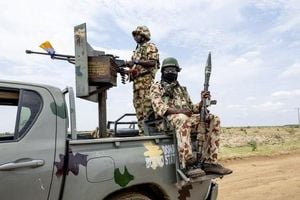The 2025 military campaign in Ukraine, described by many as the most violent and systematic since the conflict began, is drawing to a close as winter approaches. According to The Independent’s world affairs editor Sam Kiley, the war has not only reshaped the landscape of Eastern Europe but is also rewriting the very rules of modern warfare. What started as a desperate plea from President Volodymyr Zelensky for tanks and fighter jets has transformed into a high-tech contest, with drones and artificial intelligence taking center stage.
When President Vladimir Putin launched his so-called “special military operation,” the world watched as Ukraine scrambled for support from Western capitals. Zelensky, in the early days, was often seen lobbying for traditional weapons—battle tanks, armored vehicles, artillery, and advanced fighter jets. These remain vital, especially as Ukraine continues to press for enhanced missile defense systems. Yet, the battlefield has changed dramatically, and with it, the tools of war.
According to The Independent, both Ukraine and Russia have rapidly developed and deployed advanced drone and robotic technologies. Cheap “kamikaze” drones now have the power to strike fortified troop positions far behind enemy lines, while supply lines and armored columns can be destroyed by First Person View (FPV) drone operators sitting safely miles away. For a while, radio-controlled drones seemed vulnerable to jamming, but the introduction of ultra-thin fiber optic cables—capable of transmitting instructions over long distances without interference—has made these drones nearly unstoppable. The only real defense? Infantry on the ground trying to shoot them down, a nearly impossible feat.
Ground drones have also entered the fray. These small, remotely guided tracked vehicles can sneak up on dugouts and shelters undetected. In a remarkable incident reported in recent weeks, a coordinated air and ground drone attack actually resulted in the surrender and capture of two Russian soldiers, who were escorted to Ukrainian captors by the machines themselves. It’s a scene that, not so long ago, would’ve belonged in a science fiction novel.
Such technological advancements are transforming warfare much as airplanes and tanks did during the First World War, and rockets and radar did in the Second. As Sam Kiley notes, if Ukraine manages to maintain its technological edge in unmanned combat, it could offset Russia’s advantage in sheer manpower—a critical factor, given Russia’s reliance on a massive, though often poorly trained, army to wear down its enemies.
But the story isn’t just about gadgets and machines. Fr Stefano Caprio, writing on October 26, 2025, observes that the strategic context of the war is shifting. Despite the brutality of the 2025 campaign, Russia’s military advance has been limited—gaining no more than 3,000 square kilometers, or about 0.4% of Ukrainian territory, according to The Economist. At this rate, it would take Russia at least another five years to conquer the four Donbas regions—Luhansk, Donetsk, Kherson, and Zaporizhzhia. And if Moscow intended to occupy all of Ukraine, it would need more than a century, a prospect that, while daunting, hasn’t deterred the Kremlin.
The cost of this slow grind is staggering. Russia’s summer campaign failed, resulting in over 300,000 dead and seriously injured on the Russian side. US sanctions on Russian oil have only deepened the economic crisis, pushing the country toward stagnation. European funding for Ukraine, though often delayed, is described as a "tsunami" overwhelming Russia, while China’s support is limited to weapons technology and the promise of future gas purchases—real financial relief for Moscow won’t arrive before 2030.
Despite these setbacks, President Putin remains unyielding. During a meeting with the top brass of the General Staff, he insisted, “We must ensure the unconditional fulfilment of all goals set for the troops in the course of the special military operation.” This stance effectively rules out compromise, even as cracks begin to show in Russia’s economic armor. Elvira Nabiullina, President of Russia’s Central Bank, has admitted that the reserves which helped the economy weather the first years of war are now depleted. Andrei Makarov, head of the State Duma Budget Committee, warned, “The state may run out of money,” raising the specter of a repeat of the Soviet Union’s collapse.
Meanwhile, Ukraine faces its own daunting challenges. Despite continued Western arms deliveries, its armed forces are stretched thin, with fewer than 100,000 soldiers on the frontline compared to more than 500,000 Russians. Much of the combat now takes place with attack drones that secure so-called “death zones” along the front lines—areas about 15 kilometers deep that make enemy advances costly and dangerous. Yet, Ukraine’s defenses are described as a “porous belt,” riddled with gaps that allow small groups of Russian attackers to slip through.
Social and political factors further complicate Ukraine’s war effort. Many young people from the upper-middle classes have dodged military service, often aided by corruption, leaving the burden of defense to lower-class citizens. This social injustice, as reported by Fr Stefano Caprio, is deeply demoralizing. President Zelensky and his closest aides, wary of political instability, have resisted calls to replace unpopular and ineffective military commanders, fearing that more competent leaders might develop political ambitions of their own.
Internationally, the West’s response remains uncertain. Polish Prime Minister Donald Tusk has warned that the West still underestimates the Russian threat and the possibility that Russia could catch up technologically. NATO, for its part, faces internal threats from American isolationism and the disruptive actions of leaders like Hungary’s Viktor Orban. Despite repeated Russian incursions into NATO airspace, cyberattacks, espionage, and social media manipulation, public alarm in the UK and much of Europe remains muted.
On the technological front, Ukraine is pushing boundaries by applying artificial intelligence to make unmanned planes capable of selecting targets autonomously—a move that could represent another leap forward in the ongoing arms race. Yet, as the military, economic, and political stalemate drags on, neither Russia nor Ukraine appears capable of dramatically changing the course of the war. As Fr Stefano Caprio puts it, the coming year is likely to bring more all-out fighting, with little hope for a breakthrough or a negotiated peace.
For now, the conflict in Ukraine stands as a stark reminder of how quickly the nature of war can evolve—and how the world’s response, for better or worse, may lag behind the relentless march of technology and the grim realities on the ground.




